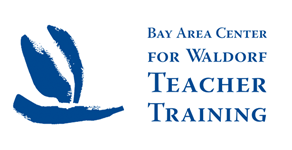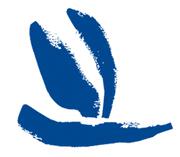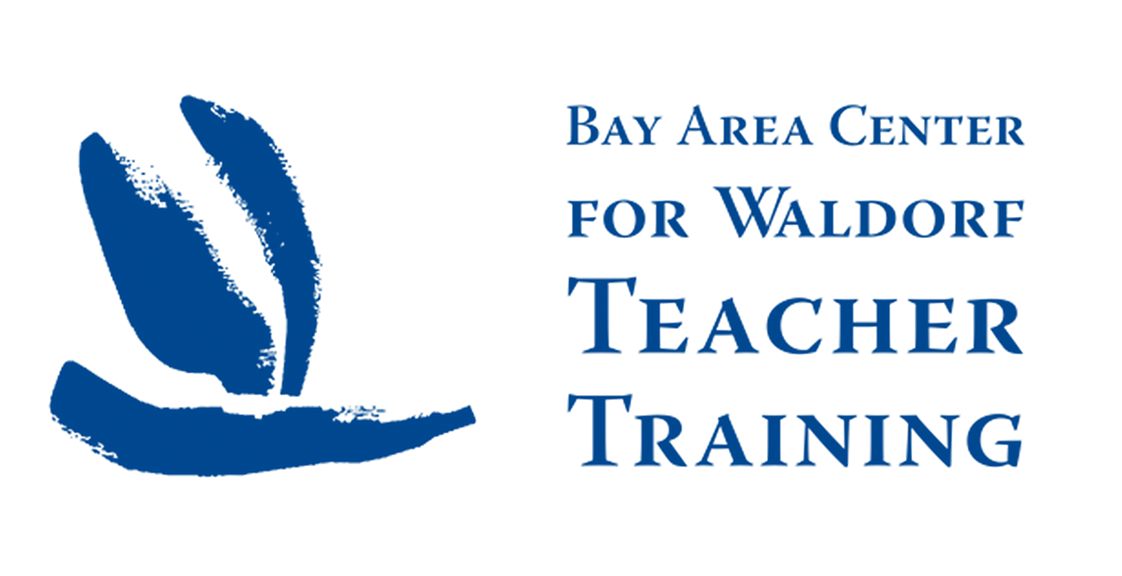Dear BACWTT Students, Alumni, Friends and Colleagues,
Here is the verse from the Calendar of the Soul for this week:
Verse 22
The light from worldwide spaces
Lives powerfully on within
It turns to light of soul
And shines into the Spirit depths
The fruits to liberate
Which let the Self of Man from Self of Worlds
Mature in times continuing flow.
This week’s verse continues the movement from outer, sunlit, summer mood towards the interior soul world. In nature, the time of harvest is here in the outer world. The wise gardener and farmer watches his or her crops carefully at this time, waiting for the precise moment according to their ripening and storage ability, to the weather and to the phases of the moon – in order to gather them in, to store them and preserve their goodness into the autumn and winter.
In the same way, the wise caretaker of the soul watches carefully now to sense the maturing of the summer’s deeds and experiences, and – with the turning inwards – harvests the fruits of the past few months for the inner world. There is a gesture of gathering from outside and storing inside, a turning out and then turning in. At the same time, there is a gesture of sorting – which are the good fruits to be kept?
In the painting below by Millet, we also see an expression of thanks, a moment of prayer in thanks for the humble bounty of the land, the sun and rain, human labor. The simple act of harvesting becomes a religious experience and a recognition of all that contributed to and is condensed into this basket of vegetables.
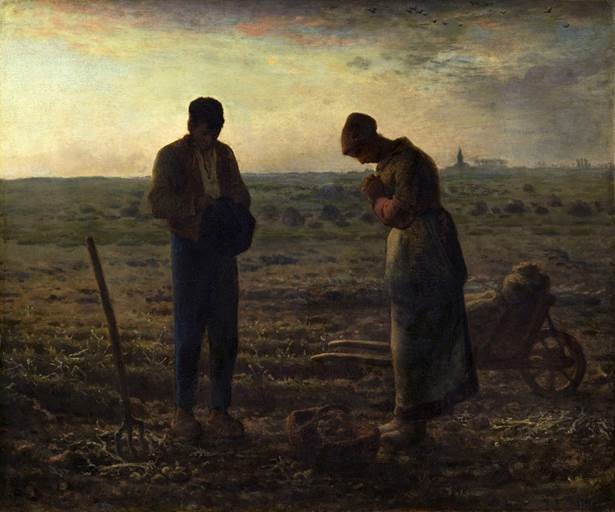
This painting has a mysterious heritage, and there is some uncertainty about the artist’s intentions (which makes it more interesting). It is called The Angelus, which is the prayer based upon the angel Gabriel’s words to Mary and relates to the mysteries of incarnation. The painting, though, has a somber mood: a dimming evening light, a coolness in the air and, with the gathering of the harvest, a relationship to the autumn.
There is a mood of weariness, heaviness, but also a firmness and solidity in the figures that, I think, connects well with the mood of this week. There is a sadness and weariness in us as we move into the autumn. The turning inwards may not be a joyful experience, but at the same time, something in us becomes more clear; boundaries more firm.
As our energy shifts with the seasons, this is also a typical time to catch an autumn cold, which can be a helpful thing, like a childhood illness that supports the coming into the body more fully. We can have a seasonal autumn illness that brings us back into ourselves after the summer expansion.
The miniature painting from the medieval Book of Hours shows an image of September/Libra. The figure has one hand up in a gesture of stop or wait and turns towards the city walls while, at the same time, is holding the scales of balance. Her image captures in one gesture the many facets of the movement of our inner world at this moment. On the same page, we see the winemakers processing and preserving the grapes.
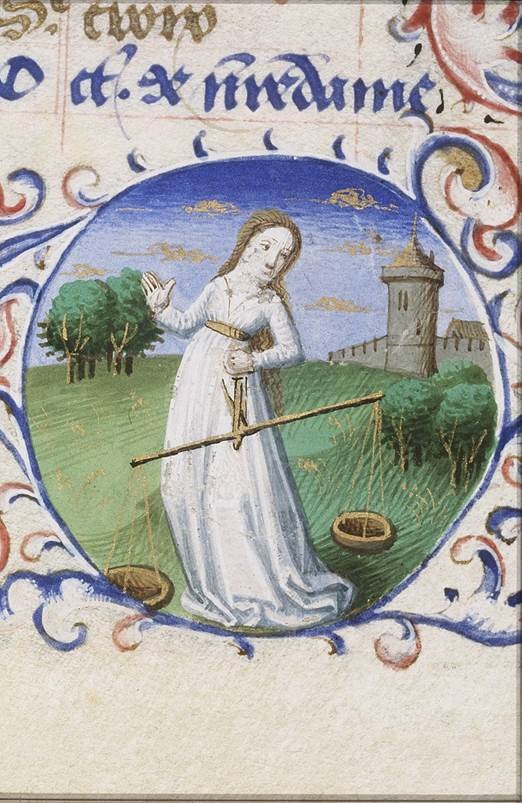
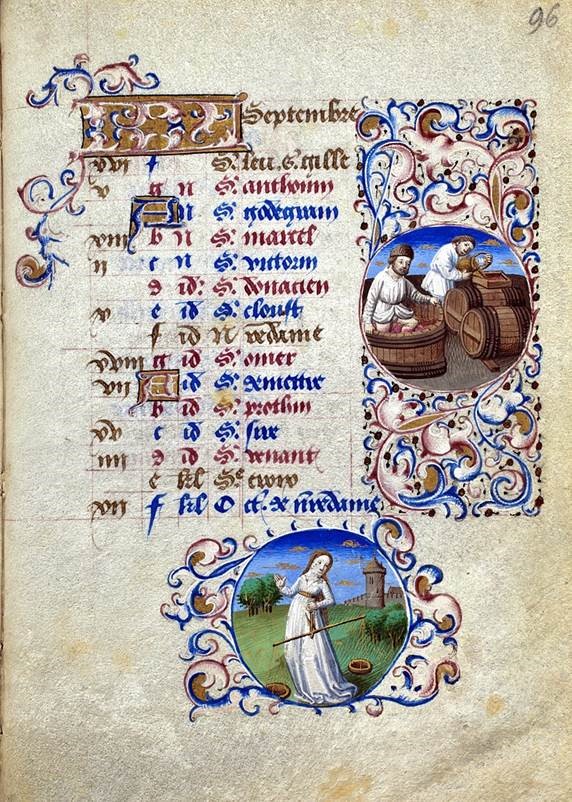
In “Lecture V: The Working Together of the Four Archangels,” Rudolf Steiner speaks about the interworking of the Archangels in the turning of the year and how they hand over “golden vessels’ to each other:
“And just as Gabriel passes on to Raphael the nutritive forces, to be transmuted into forces of healing — in other words, he passes on his golden vessel — and just as Raphael passes on his golden vessel to Uriel, whereby the healing forces are made into the forces of thought, so it is Michael who receives from Uriel the thought-forces, and through the power of cosmic iron, out of which his sword is forged, transforms these thought-forces into forces of will, so that in man they become the forces of movement.”
The Calendar of the Soul follows the process of the year week by week, but moving above this – in a slower rhythm of 3 months – is the cycle of the Archangels who watch over each of the four seasons. At this time, we can perhaps sense this passing of the golden vessel from Uriel to Michael, and a new quality of awakening will begin to take hold.
It is certainly the case at BACWTT that we feel the awakening of will amongst our student body, as they prepare to enter into the work of the year ahead. Coming out of the summer mood, decisions are being made. We feel the gesture of Michael in these decisions and actions as new students take the step to enroll, and 2nd and 3rd year students gather their forces together again to continue the journey.
The staff and faculty also have this moment to “listen in” to what is coming towards them in the will of the student body, to sense the particular mood and intent of the coming year. With all of the dramatic events surrounding us – attempting to see through the smoke and breathing through the restrictions of the mask – coming to calmer and clearer pictures of what is working in the will of the world at this time seems vitally important.
This verse often used by Waldorf teachers captures this gesture:
We have the will to work,
Letting flow into this our work
That which, from out of Spiritual Worlds,
Working in Soul and Spirit,
In Life and Body,
Strives to become human in us.
The first line with the emphasis on the “W” sound is a powerful affirmation of our intention to be present and do our best. From there, what is striving in the spiritual world to become manifest can find its way through our good will.
As we embark on this new year at BACWTT with the restrictions created by the virus, we have rediscovered an old Anthroposophical practice that somehow, with all of the other things we try to squeeze into the program, became a little sidelined. That is the individual, daily, inner practice – verse, meditation, Eurythmy, observation exercise, journaling. The things that you can do by yourself, in your own home. It is our hope that reestablishing these as a core aspect of our program will strengthen all of our work and well being at this time.
The restrictions on gathering created by the virus have thrown light on an aspect of our work – the social aspect – which is a very important part of how we teach, learn and process in Waldorf education. As we continue to live with these social restrictions, we have an opportunity to reassess the value we place on the “social fabric” and how we make sure that we treat this with care and respect. I wonder if this is one of the things that needs to be “reset.” My experience is that the social life in Waldorf schools and institutes can be “overheated,” “feverish” and not serving the best interests of the students. Perhaps, for us, the illness created by the virus, which has created an illness in the social realm, is an opportunity to incarnate more carefully into this realm (like the figures in the Millet painting), to become more firm and solid in our boundaries – even if the mood is somber.
In preparing for the new class this year, my colleague, Liz Turkel-Vose, expressed that even though we will be at a distance and building a social fabric will hold new challenges, we need to remember to strive towards the image expressed in Rudolf Steiner’s Motto of the Social Ethic:
The healing social life is found,
When in the mirror of each human soul,
The whole community finds its reflection;
And when, in the community,
The virtue of each one is living.
Ken
Kenneth Smith
Director
BACWTT
